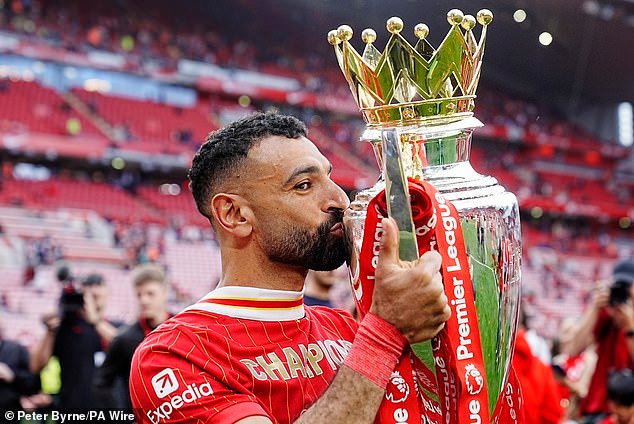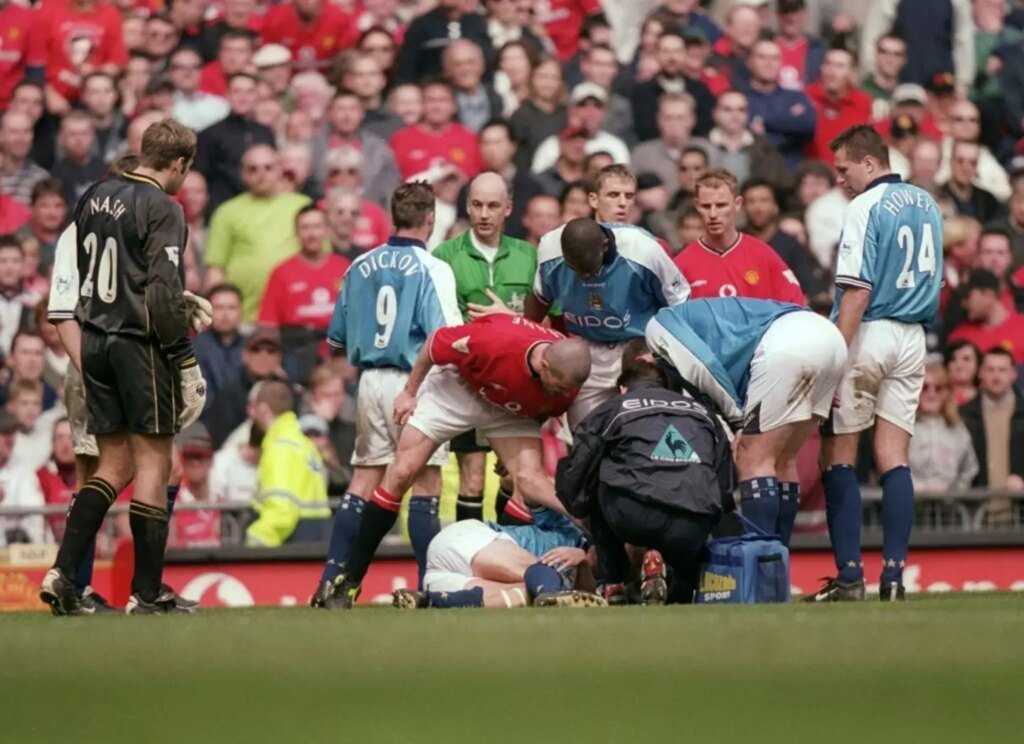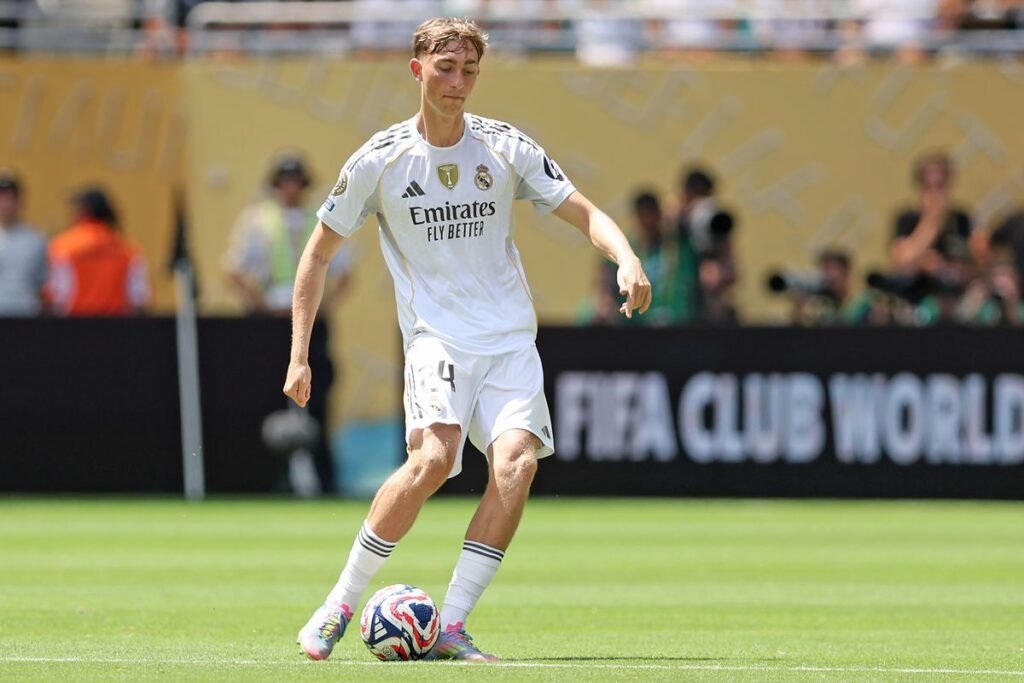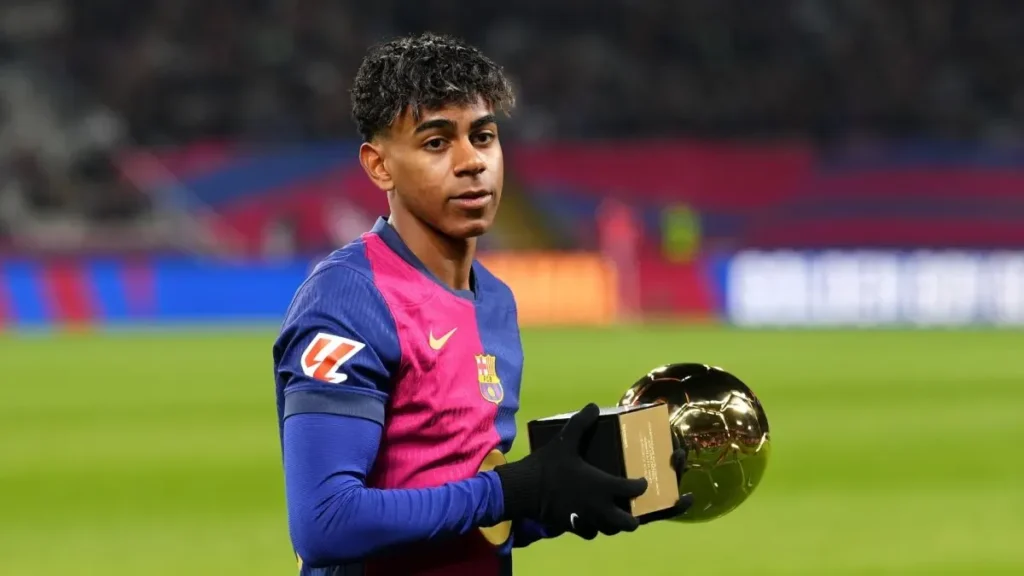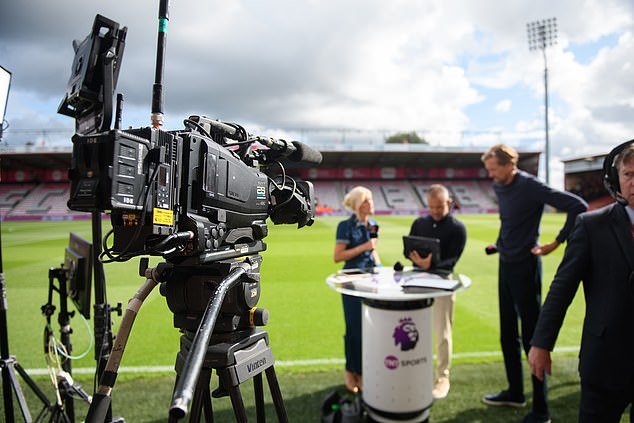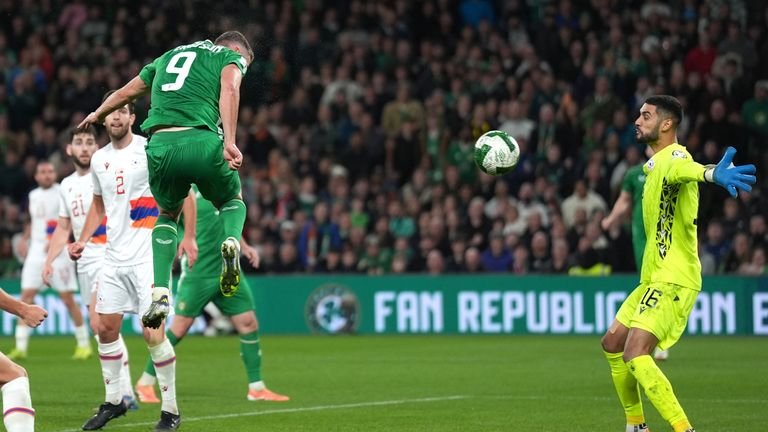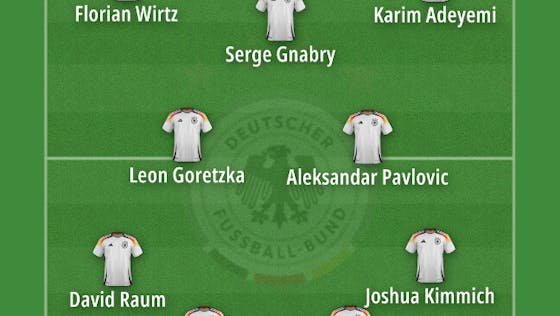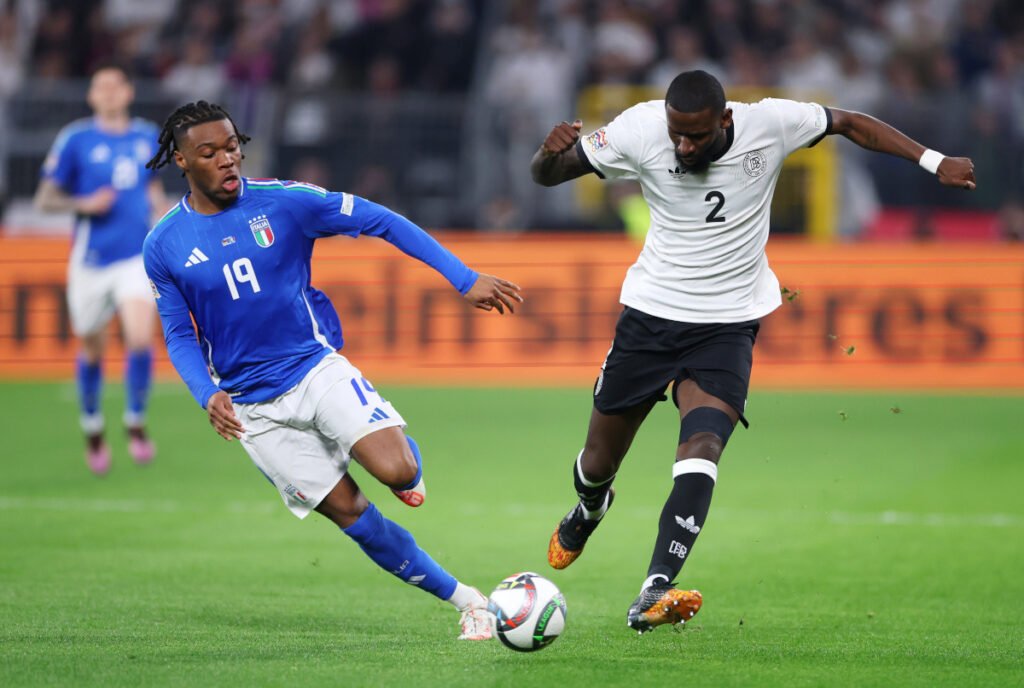After a relatively muted start to 2025–26, the Premier League has burst back into life over the past two matchweeks. Late goals, going direct and throws into the box returning to prominence have revived memories from decades past. Passing sequences are shrinking — matches now average the fewest passes in 15 years, and more than 100 long balls per game.
The trend was increasingly evident last season, and now it’s unmistakable. English football’s top division has been rebuilt around power and presence up front — Erling Haaland, Benjamin Sesko, Viktor Gyokeres, Chris Wood, Alexander Isak, Hugo Ekitike, Jean-Philippe Mateta and Thierno Barry headline a wave of strikers reshaping how modern teams play and redefining what football looks like in the data age.
How teams played directly in 2024-25
The widespread adoption of high defensive lines and coordinated counter-pressing has opened huge spaces behind defences. For many managers, going early and long has become the most efficient way to exploit these areas, bypass pressure and win territory higher up the pitch. It’s less about abandoning possession than attacking the gaps those pressing systems create.
PL 2024-25 Direct Team Profile
| Team | Passes per shot | Long % (per 100 passes) | Through balls / 100 passes | Non-cross PPA / 100 passes | Crosses / 100 passes | Shots / 90 | npxG / shot | % of offensive second balls won |
|---|---|---|---|---|---|---|---|---|
|
Liverpool |
34.05 |
11.72 |
0.32 |
1.59 |
4.92 |
16.82 |
0.12 |
32.1 |
|
Crystal Palace |
30.77 |
16.15 |
0.45 |
1.29 |
3.94 |
13.47 |
0.11 |
29.5 |
|
Nott’ham Forest |
31.23 |
16.28 |
0.41 |
1.23 |
3.84 |
12.11 |
0.09 |
30.7 |
|
Brentford |
39.4 |
16.03 |
0.4 |
1.37 |
4.56 |
11.42 |
0.13 |
30.6 |
|
Bournemouth |
29.44 |
16.68 |
0.35 |
1.38 |
4.53 |
15.11 |
0.1 |
27.5 |
|
Fulham |
38.28 |
13.68 |
0.22 |
1.19 |
3.35 |
13.58 |
0.09 |
30.3 |
|
Everton |
37.01 |
19.4 |
0.2 |
1.13 |
4.32 |
10.63 |
0.1 |
30.3 |
|
West Ham |
38.82 |
14.05 |
0.29 |
1.06 |
3.34 |
12.45 |
0.09 |
29 |
|
League avg |
34.87 |
15.5 |
0.33 |
1.28 |
3.66 |
13.2 |
0.1 |
30.6 |
There are, though, several ways to play directly, as we saw in the Premier League last season.
Controlled-vertical sides: Liverpool, Crystal Palace and Brentford
Liverpool were the benchmark for controlled directness. Under new head coach Arne Slot, they played forward early without losing structure, using central lanes to connect midfield and attack. Virgil van Dijk’s diagonals and Trent Alexander‑Arnold’s ability on the ball supported that route, while a steadier 4‑2‑3‑1 with Ryan Gravenberch and Alexis Mac Allister screening in midfield added balance. Slot maintained predecessor Jurgen Klopp’s intensity but layered in discipline and central focus. A modest long‑ball rate paired with the league’s highest share of non‑cross entries turned direct phases into pressure and chances without exposing the back line.
Crystal Palace followed a similar path under Oliver Glasner. They led this group of teams for through balls and maintained strong shot quality. Attacks were anchored around Mateta, with Eberechi Eze and others arriving onto knockdowns. Out of possession, they stayed compact and central, then attacked inside channels or looked to release Daniel Munoz on overlaps.
Brentford’s version of control was more deliberate but equally efficient. Yoane Wissa and Bryan Mbeumo combined fluidly, giving Thomas Frank’s side a consistent outlet across the front line. They put high emphasis on set pieces and high-quality chances — taking the right shots, not more of them. This belief was reflected in one of the league’s highest xG-per-shot returns.

(Ryan Pierse/Getty Images)
Wide-driven: Fulham, West Ham and Nottingham Forest
Fulham were the clearest case of wide-driven play. Marco Silva’s lads created constant width — Antonee Robinson’s overlaps and rotations with Andreas Pereira and Alex Iwobi — but too many moves ended in hopeful crosses. They dropped a league-high 28 points from winning positions, and the numbers told the same story: plenty of entries and corners, but below-average shot quality, many of them first-time efforts taken from awkward angles.
West Ham were similar. Long diagonals from deep sought wide forwards early, bypassing midfield. Jarrod Bowen stayed their key outlet, but Mohammed Kudus’ shift to the left blunted his previous output and dulled their threat. More often than not, attacks broke into corners or second phases.
Forest were the most explosive of the wide-driven teams. Nuno Espirito Santo’s side attacked vertically at pace, yet many regains funnelled into the channels rather than central areas. Sharp finishing — Wood’s 20 goals from 13.4xG — and flashes from Morgan Gibbs-White, Callum Hudson-Odoi and Anthony Elanga masked a lack of repeatable, central chance creation.

(Mike Hewitt/Getty Images)
Volume and chaos: Bournemouth and Everton
Bournemouth were the poster boys for chaos-ball. Under Andoni Iraola, they played at one of the league’s highest speeds in possession and had the fewest passes per shot. Press-to-attack transitions produced quick regains, early forward balls and box entries before defences could reset. The payoff was 15.1 shots per 90 minutes — fourth most in the league — but low shot value, with many of Bournemouth’s attacks ending in rushed actions. They have maintained that identity in 2025-26 despite a near-complete defensive turnover, a sign of both system clarity and strong coaching.
Bournemouth were the anti-Brentford. Both finished last season on 56 points, but their methods could hardly be more different. Brentford’s patience and precision produced higher-value chances; Bournemouth’s tempo and chaos produced more shots but fewer rewards. It’s proof that in the Premier League, execution — not method — still decides success.
Everton sat at the opposite extreme: direct, physical and restart-driven. Under Sean Dyche and then January replacement David Moyes, they posted one of the league’s highest long-pass shares and its fewest through balls. Attacks began from set pieces or competing for second balls, building pressure through repetition rather than rhythm. Volume was high, but clean chances rare.
Both these teams revealed opposite faces of high-volume football — Bournemouth thrived on chaos but lacked precision and squandered good positions, while Everton’s focus on their discipline meant they created very little.

Second balls
If long passes define where attacks begin, second balls decide whether they become chances or turnovers.
In England, they’ve long been a tactical obsession. Pep Guardiola-era football brought shorter passing and control, but even then, winning seconds stayed vital; last season, despite wobbling defensively, Guardiola’s Manchester City were still among the league’s best at recovering second balls. With long balls rising again, those battles matter more than ever: dominate territory, win the first contact, and be compact enough to pounce on the drop. This isn’t more chaos, it’s more teams training to manage it.
Manchester United ranked among the best teams at winning second balls last season, and in the early weeks this time they have used it as a weapon. In their recent 2-1 win against Chelsea, the opener came from a rehearsed pattern where Sesko went up for the aerial duel for a long ball from goalkeeper Altay Bayindir, an opposition centre-back followed, and Mbeumo ran into the space left behind. When Robert Sanchez rushed from goal to try to clear, Mbeumo reached the loose ball after Sesko’s flick-on first, drew contact and the ’keeper was sent off.

United’s second goal that day was even clearer. After Reece James’ high clearance from a corner, Luke Shaw attacked and leapt to win the next header and the drop fell to Casemiro at the far post for a simple finish: first contact in chaos, and bodies set for the rebound.

(Alex Livesey/Getty Images)
Brentford have mastered the art of weaponising second phases. They are getting the most out of Jordan Henderson’s whipped deliveries from the right half-space, which are designed to invite the second ball, not the first header at the edge of the box. Additionally, his long passing from deep has become an extension of that same principle — the assist for the opener against Manchester United came from inside his own box (say hello to the longest assist of the season so far!), and it was a similar direct ball to create the opener against Chelsea. Notably, the intent carries through to their set pieces, too.
Against Chelsea, their stoppage-time equaliser came from a long throw: near-post flick, second ball finished at the far post. There had been a warning in the 87th minute from the same area; the second time, they won both duels. It’s a continuation of the meticulous work of new head coach Keith Andrews, who previously served as Thomas Frank’s assistant and set-piece coach.

Palace remain efficient without volume. Their goals to beat West Ham away and Liverpool at home both came from winning second balls in the opposition box.
Bournemouth sat at the other end of the spectrum last season, ranking among the league’s worst for offensive second-ball recoveries. That could be a trade-off of high-speed vertical play that can outrun support around the drop. They did use the left flank to play long balls and win them with the forever-bombing-forward Milos Kerkez, and this season they’ve already profited when Antoine Semenyo punished a dropped clearance against Brighton — evidence that when they commit numbers, their chaos often yields results.
And the data endorses the theme. Last season’s champions Liverpool also led the division for offensive and defensive second-ball wins — a neat reminder that even the best possession sides build success on those moments.
Cutbacks
Cutbacks, meanwhile, remain the cleanest end to direct attacks.
City and Arsenal led the league last season, while Liverpool, Fulham and Palace also reached the byline effectively. For Fulham, it was a natural extension of their wide overloads and crossing variety, with inswingers, outswingers and drilled passes all feeding the same idea: find the pull-back, not the float.

This season, Everton have joined that trend. Once among the league’s most aerial sides, they are now finishing on the floor — already producing 13 cutback chances and three goals by matchweek seven. The summer arrivals of Jack Grealish and Kiernan Dewsbury-Hall, players schooled under Guardiola and Enzo Maresca respectively, have added timing and composure around the box, turning wide moves into short, low passes instead of hopeful crosses. It’s a small tactical tweak, but one that can turn volume into value.

2025-26: An evolution of direct play
The data from this season’s first seven rounds confirms what the numbers in the previous one hinted at: Premier League football is getting longer and quicker. Long balls are up, switches and crosses are rising, while non-cross entries have slipped. Shots per 90 are slightly down but corners continue to climb — teams now rely more on territory and height than on sustained passing sequences.
PL 2025–26 Direct Team Snapshot (MD7)
| Team | Long % (per 100 passes) | Through balls / 100 passes | Non-cross PPA / 100 passes | Crosses / 100 passes | Shots / 90 | npxG / shot |
|---|---|---|---|---|---|---|
|
Crystal Palace |
17.4 |
0.72 |
1.26 |
3.6 |
12.43 |
0.14 |
|
Bournemouth |
17.08 |
0.39 |
1.24 |
4.34 |
12.86 |
0.08 |
|
Everton |
17.01 |
0.53 |
1.33 |
3.95 |
11.71 |
0.11 |
|
Newcastle |
16.34 |
0.44 |
1.13 |
4.85 |
11.29 |
0.1 |
|
Sunderland |
17.38 |
0.27 |
0.74 |
4.25 |
9.86 |
0.09 |
|
Leeds |
15.92 |
0.2 |
0.71 |
3.41 |
12 |
0.08 |
|
Manchester United |
15.26 |
0.58 |
1.13 |
3.62 |
15.29 |
0.11 |
|
Burnley |
18.63 |
0.33 |
0.69 |
3.3 |
8 |
0.09 |
Palace are the clearest example of how direct play can be controlled rather than chaotic. Their long-pass rate sits above the league average, but their balance through the middle remains impressive. Glasner’s FA Cup holders go forward early and centrally, producing sharp, efficient shots without relying on corners or rebounds — a blend of clarity and control that’s carried them into the top six.
United, in contrast, represent the opposite approach. They take more shots than anyone, but too many of these come from poor positions. Their long balls rarely lead to structured attacks, often ending in speculative efforts — proof that true directness still demands patience as much as pace.
The promoted trio are adapting fast. Sunderland and Leeds have built for height and set-piece strength in the transfer market, while Burnley remain the most traditional of the three, stretching play without yet showing enough quality to regularly profit from doing so.

